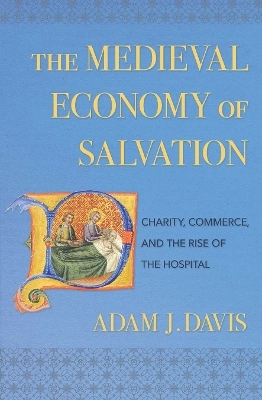
The Medieval Economy of Salvation
Charity, Commerce, and the Rise of the Hospital
Seiten
2019
Cornell University Press (Verlag)
978-1-5017-4210-1 (ISBN)
Cornell University Press (Verlag)
978-1-5017-4210-1 (ISBN)
In The Medieval Economy of Salvation, Adam J. Davis shows how the burgeoning commercial economy of western Europe in the twelfth and thirteenth centuries, alongside an emerging culture of Christian charity, led to the establishment of hundreds of hospitals and leper houses. Focusing on the county of Champagne, he looks at the ways in which...
In The Medieval Economy of Salvation, Adam J. Davis shows how the burgeoning commercial economy of western Europe in the twelfth and thirteenth centuries, alongside an emerging culture of Christian charity, led to the establishment of hundreds of hospitals and leper houses. Focusing on the county of Champagne, he looks at the ways in which charitable organizations and individuals—townspeople, merchants, aristocrats, and ecclesiastics—saw in these new institutions a means of infusing charitable giving and service with new social significance and heightened expectations of spiritual rewards.
In tracing the rise of the medieval hospital during a period of intense urbanization and the transition from a gift economy to a commercial one, Davis makes clear how embedded this charitable institution was in the wider social, cultural, religious, and economic fabric of medieval life.
Open Access edition funded by the National Endowment for the Humanities
In The Medieval Economy of Salvation, Adam J. Davis shows how the burgeoning commercial economy of western Europe in the twelfth and thirteenth centuries, alongside an emerging culture of Christian charity, led to the establishment of hundreds of hospitals and leper houses. Focusing on the county of Champagne, he looks at the ways in which charitable organizations and individuals—townspeople, merchants, aristocrats, and ecclesiastics—saw in these new institutions a means of infusing charitable giving and service with new social significance and heightened expectations of spiritual rewards.
In tracing the rise of the medieval hospital during a period of intense urbanization and the transition from a gift economy to a commercial one, Davis makes clear how embedded this charitable institution was in the wider social, cultural, religious, and economic fabric of medieval life.
Open Access edition funded by the National Endowment for the Humanities
Adam J. Davis is Professor of History and Director of the Lisska Center for Scholarly Engagement at Denison University. He is the author of The Holy Bureaucrat. Follow him on X @AdamJDavis2.
List of Illustrations
Acknowledgments
Abbreviations
A Note on Monies and Measures
Introduction: A Charitable Revolution in an Age of Commerce
1. Medieval Understandings of Charity: From Penance to Commerce
2. The Creation of a Charitable Landscape
3. Hospital Patrons and Social Networks
4. Managing a Hospital's Property
5. "In Service of the Poor": Hospital Personnel in Pursuit of Security
6. The Sick Poor and the Economy of Care
Epilogue
Bibliography
Index
| Erscheinungsdatum | 04.11.2019 |
|---|---|
| Zusatzinfo | 1 Maps; 5 Halftones, black and white |
| Verlagsort | Ithaca |
| Sprache | englisch |
| Maße | 152 x 229 mm |
| Gewicht | 907 g |
| Themenwelt | Geschichte ► Allgemeine Geschichte ► Mittelalter |
| Geschichte ► Teilgebiete der Geschichte ► Religionsgeschichte | |
| Studium ► Querschnittsbereiche ► Geschichte / Ethik der Medizin | |
| ISBN-10 | 1-5017-4210-8 / 1501742108 |
| ISBN-13 | 978-1-5017-4210-1 / 9781501742101 |
| Zustand | Neuware |
| Informationen gemäß Produktsicherheitsverordnung (GPSR) | |
| Haben Sie eine Frage zum Produkt? |
Mehr entdecken
aus dem Bereich
aus dem Bereich
eine neue Geschichte des Mittelalters
Buch | Hardcover (2023)
C.H.Beck (Verlag)
CHF 53,20


